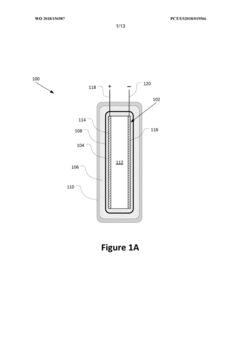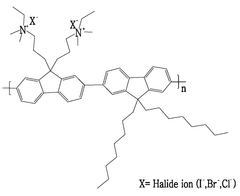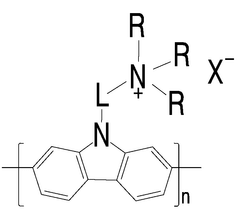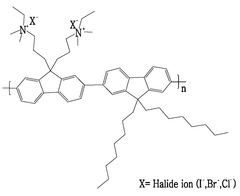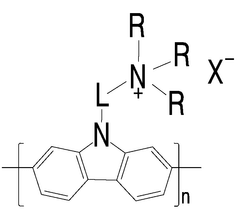Perovskite vs Silicon: Stability Comparison for Long-Term Field Deployment
AUG 20, 20259 MIN READ
Generate Your Research Report Instantly with AI Agent
Patsnap Eureka helps you evaluate technical feasibility & market potential.
Perovskite-Silicon Stability Background
The stability comparison between perovskite and silicon solar cells for long-term field deployment is a critical area of research in the photovoltaic industry. Silicon-based solar cells have been the dominant technology for decades, known for their reliability and longevity. However, perovskite solar cells have emerged as a promising alternative due to their potential for higher efficiency and lower production costs.
Silicon solar cells have demonstrated remarkable stability, with many commercial panels maintaining over 80% of their initial efficiency after 25 years of outdoor exposure. This long-term stability is attributed to the inherent properties of crystalline silicon and the robust encapsulation techniques developed over years of industry experience. Silicon's stability under various environmental conditions, including temperature fluctuations, humidity, and UV radiation, has been extensively studied and documented.
In contrast, perovskite solar cells are a relatively new technology, first reported in 2009. While they have shown rapid improvements in efficiency, reaching levels comparable to or even surpassing silicon cells in laboratory settings, their long-term stability remains a significant challenge. Perovskite materials are sensitive to moisture, oxygen, and heat, which can lead to rapid degradation when exposed to real-world conditions.
The stability issues in perovskite solar cells stem from several factors. The crystal structure of perovskites can be unstable, leading to phase transitions or decomposition under thermal stress. Additionally, ion migration within the perovskite layer can cause performance degradation over time. The interfaces between the perovskite layer and charge transport layers are also prone to degradation, affecting the overall device stability.
Recent research has focused on improving the stability of perovskite solar cells through various strategies. These include compositional engineering of the perovskite material, development of more robust hole and electron transport layers, and advanced encapsulation techniques. Some studies have shown promising results, with certain perovskite compositions demonstrating stability for thousands of hours under accelerated aging conditions.
However, the long-term field stability of perovskite solar cells, comparable to the 25-year lifespan of silicon panels, has yet to be conclusively demonstrated. The photovoltaic community is actively working on bridging this gap, with ongoing efforts to develop standardized stability testing protocols for perovskite solar cells that can accurately predict their long-term performance in real-world conditions.
Silicon solar cells have demonstrated remarkable stability, with many commercial panels maintaining over 80% of their initial efficiency after 25 years of outdoor exposure. This long-term stability is attributed to the inherent properties of crystalline silicon and the robust encapsulation techniques developed over years of industry experience. Silicon's stability under various environmental conditions, including temperature fluctuations, humidity, and UV radiation, has been extensively studied and documented.
In contrast, perovskite solar cells are a relatively new technology, first reported in 2009. While they have shown rapid improvements in efficiency, reaching levels comparable to or even surpassing silicon cells in laboratory settings, their long-term stability remains a significant challenge. Perovskite materials are sensitive to moisture, oxygen, and heat, which can lead to rapid degradation when exposed to real-world conditions.
The stability issues in perovskite solar cells stem from several factors. The crystal structure of perovskites can be unstable, leading to phase transitions or decomposition under thermal stress. Additionally, ion migration within the perovskite layer can cause performance degradation over time. The interfaces between the perovskite layer and charge transport layers are also prone to degradation, affecting the overall device stability.
Recent research has focused on improving the stability of perovskite solar cells through various strategies. These include compositional engineering of the perovskite material, development of more robust hole and electron transport layers, and advanced encapsulation techniques. Some studies have shown promising results, with certain perovskite compositions demonstrating stability for thousands of hours under accelerated aging conditions.
However, the long-term field stability of perovskite solar cells, comparable to the 25-year lifespan of silicon panels, has yet to be conclusively demonstrated. The photovoltaic community is actively working on bridging this gap, with ongoing efforts to develop standardized stability testing protocols for perovskite solar cells that can accurately predict their long-term performance in real-world conditions.
Market Analysis for Stable Solar Cells
The solar cell market is experiencing significant growth, driven by increasing global demand for renewable energy sources. As of 2023, the global solar cell market size was valued at approximately $115 billion, with projections indicating a compound annual growth rate (CAGR) of 8.5% from 2024 to 2030. This growth is primarily fueled by government initiatives, declining solar panel costs, and rising environmental awareness.
Within this expanding market, stability has emerged as a critical factor for long-term field deployment of solar cells. Traditional silicon-based solar cells have long dominated the market due to their proven reliability and longevity. These cells typically maintain 80% of their initial efficiency after 25-30 years of operation, making them attractive for large-scale installations and residential use.
However, perovskite solar cells have recently gained significant attention due to their potential for higher efficiency and lower production costs. The perovskite solar cell market segment is expected to grow at a CAGR of over 30% in the coming years, albeit from a much smaller base compared to silicon. This rapid growth is driven by the technology's promising performance in laboratory settings, with record efficiencies surpassing 25%.
Despite the enthusiasm surrounding perovskite technology, stability remains a major concern for its commercial viability. Current perovskite cells struggle to maintain their performance over extended periods, particularly when exposed to environmental factors such as moisture, heat, and UV radiation. This instability has limited their market penetration, especially in utility-scale applications where long-term reliability is paramount.
The market demand for stable solar cells is evident across various sectors. Utility-scale solar farms, which account for a significant portion of solar energy generation, prioritize long-term stability to ensure consistent power output and return on investment. Similarly, the residential and commercial rooftop solar markets value reliability, as consumers expect their solar installations to last for decades with minimal degradation.
Emerging markets for solar cells, such as building-integrated photovoltaics (BIPV) and solar-powered electric vehicles, also emphasize the need for stable, long-lasting solar solutions. These applications require solar cells that can withstand diverse environmental conditions while maintaining consistent performance over many years.
In response to these market demands, research and development efforts are intensifying to improve the stability of both silicon and perovskite solar cells. Innovations in encapsulation techniques, material engineering, and hybrid cell designs are being pursued to enhance the longevity and reliability of solar technologies. The market is likely to reward breakthroughs in stability with increased adoption and market share, particularly for perovskite technology if it can match or exceed the stability of silicon while maintaining its other advantages.
Within this expanding market, stability has emerged as a critical factor for long-term field deployment of solar cells. Traditional silicon-based solar cells have long dominated the market due to their proven reliability and longevity. These cells typically maintain 80% of their initial efficiency after 25-30 years of operation, making them attractive for large-scale installations and residential use.
However, perovskite solar cells have recently gained significant attention due to their potential for higher efficiency and lower production costs. The perovskite solar cell market segment is expected to grow at a CAGR of over 30% in the coming years, albeit from a much smaller base compared to silicon. This rapid growth is driven by the technology's promising performance in laboratory settings, with record efficiencies surpassing 25%.
Despite the enthusiasm surrounding perovskite technology, stability remains a major concern for its commercial viability. Current perovskite cells struggle to maintain their performance over extended periods, particularly when exposed to environmental factors such as moisture, heat, and UV radiation. This instability has limited their market penetration, especially in utility-scale applications where long-term reliability is paramount.
The market demand for stable solar cells is evident across various sectors. Utility-scale solar farms, which account for a significant portion of solar energy generation, prioritize long-term stability to ensure consistent power output and return on investment. Similarly, the residential and commercial rooftop solar markets value reliability, as consumers expect their solar installations to last for decades with minimal degradation.
Emerging markets for solar cells, such as building-integrated photovoltaics (BIPV) and solar-powered electric vehicles, also emphasize the need for stable, long-lasting solar solutions. These applications require solar cells that can withstand diverse environmental conditions while maintaining consistent performance over many years.
In response to these market demands, research and development efforts are intensifying to improve the stability of both silicon and perovskite solar cells. Innovations in encapsulation techniques, material engineering, and hybrid cell designs are being pursued to enhance the longevity and reliability of solar technologies. The market is likely to reward breakthroughs in stability with increased adoption and market share, particularly for perovskite technology if it can match or exceed the stability of silicon while maintaining its other advantages.
Current Challenges in Long-Term Stability
The long-term stability of solar cells remains a critical challenge in the comparison between perovskite and silicon technologies for field deployment. Silicon solar cells have demonstrated remarkable stability, with operational lifetimes exceeding 25 years in various environmental conditions. However, perovskite solar cells, despite their rapid efficiency improvements, still face significant hurdles in achieving comparable long-term stability.
One of the primary challenges for perovskite solar cells is their susceptibility to environmental factors. Moisture, oxygen, and heat can cause rapid degradation of the perovskite material, leading to a significant decrease in performance over time. This degradation is often manifested as phase segregation, ion migration, and interfacial defects, which collectively contribute to reduced power conversion efficiency and overall cell stability.
In contrast, silicon solar cells benefit from the inherent stability of crystalline silicon and well-established encapsulation techniques. These cells are less prone to environmental degradation and have proven their resilience in diverse climatic conditions. However, silicon cells are not without their own stability issues, such as light-induced degradation and potential-induced degradation, which can affect long-term performance.
The encapsulation of perovskite solar cells presents another significant challenge. While effective encapsulation methods have been developed for silicon cells, perovskite devices require more sophisticated approaches due to their sensitivity to moisture and oxygen. Current encapsulation techniques for perovskites often struggle to provide the same level of protection as those used for silicon cells, particularly over extended periods.
Temperature fluctuations pose a substantial threat to the stability of both technologies, but perovskites are particularly vulnerable. High temperatures can accelerate the degradation of perovskite materials, leading to structural changes and performance losses. Silicon cells, while also affected by temperature, generally exhibit better thermal stability and can withstand higher operating temperatures without significant degradation.
The intrinsic material properties of perovskites contribute to their instability challenges. The ionic nature of perovskite crystals allows for ion migration under electric fields, which can lead to compositional changes and the formation of defects over time. This phenomenon is less pronounced in silicon cells, contributing to their superior long-term stability.
Addressing these stability challenges requires multifaceted approaches. For perovskite solar cells, research efforts are focused on developing more stable perovskite compositions, improving interfacial engineering, and enhancing encapsulation technologies. For silicon cells, ongoing work aims to mitigate light-induced degradation and improve resistance to potential-induced degradation.
One of the primary challenges for perovskite solar cells is their susceptibility to environmental factors. Moisture, oxygen, and heat can cause rapid degradation of the perovskite material, leading to a significant decrease in performance over time. This degradation is often manifested as phase segregation, ion migration, and interfacial defects, which collectively contribute to reduced power conversion efficiency and overall cell stability.
In contrast, silicon solar cells benefit from the inherent stability of crystalline silicon and well-established encapsulation techniques. These cells are less prone to environmental degradation and have proven their resilience in diverse climatic conditions. However, silicon cells are not without their own stability issues, such as light-induced degradation and potential-induced degradation, which can affect long-term performance.
The encapsulation of perovskite solar cells presents another significant challenge. While effective encapsulation methods have been developed for silicon cells, perovskite devices require more sophisticated approaches due to their sensitivity to moisture and oxygen. Current encapsulation techniques for perovskites often struggle to provide the same level of protection as those used for silicon cells, particularly over extended periods.
Temperature fluctuations pose a substantial threat to the stability of both technologies, but perovskites are particularly vulnerable. High temperatures can accelerate the degradation of perovskite materials, leading to structural changes and performance losses. Silicon cells, while also affected by temperature, generally exhibit better thermal stability and can withstand higher operating temperatures without significant degradation.
The intrinsic material properties of perovskites contribute to their instability challenges. The ionic nature of perovskite crystals allows for ion migration under electric fields, which can lead to compositional changes and the formation of defects over time. This phenomenon is less pronounced in silicon cells, contributing to their superior long-term stability.
Addressing these stability challenges requires multifaceted approaches. For perovskite solar cells, research efforts are focused on developing more stable perovskite compositions, improving interfacial engineering, and enhancing encapsulation technologies. For silicon cells, ongoing work aims to mitigate light-induced degradation and improve resistance to potential-induced degradation.
Existing Stability Enhancement Solutions
01 Encapsulation techniques for improved stability
Various encapsulation methods are employed to enhance the stability of perovskite and silicon solar cells. These techniques involve using protective layers or materials to shield the active components from environmental factors such as moisture and oxygen, which can degrade cell performance over time. Advanced encapsulation strategies can significantly extend the operational lifespan of these solar cells.- Encapsulation techniques for improved stability: Advanced encapsulation methods are employed to enhance the stability of perovskite and silicon solar cells. These techniques involve using specialized materials and processes to protect the sensitive perovskite layer from environmental factors such as moisture and oxygen, which can degrade cell performance over time. Improved encapsulation helps extend the operational lifespan of the solar cells and maintains their efficiency under various conditions.
- Interface engineering for enhanced stability: Interface engineering focuses on optimizing the boundaries between different layers in perovskite-silicon tandem solar cells. This approach involves developing novel materials and structures to reduce interfacial defects, improve charge transport, and minimize recombination losses. By enhancing the interface stability, the overall performance and longevity of the solar cells are significantly improved.
- Compositional tuning of perovskite materials: Researchers are exploring various compositional modifications to perovskite materials to enhance their intrinsic stability. This includes incorporating different cations, anions, or dopants into the perovskite structure to improve its resistance to environmental stressors and phase instability. The goal is to develop perovskite compositions that maintain high efficiency while exhibiting improved thermal and operational stability.
- Tandem cell architecture optimization: Optimizing the architecture of perovskite-silicon tandem solar cells is crucial for achieving both high efficiency and long-term stability. This involves designing and implementing novel cell structures, such as improved recombination layers, buffer layers, and electrode configurations. The aim is to create a synergistic effect between the perovskite and silicon layers, enhancing overall cell stability and performance.
- Passivation strategies for defect reduction: Various passivation techniques are being developed to reduce defects in perovskite and silicon solar cells. These strategies involve applying thin layers of carefully selected materials to minimize surface and bulk defects, which can act as recombination centers and degrade cell performance. Effective passivation not only improves initial cell efficiency but also contributes to long-term operational stability by mitigating degradation mechanisms.
02 Interface engineering for enhanced stability
Interface engineering plays a crucial role in improving the stability of perovskite and silicon solar cells. This involves optimizing the interfaces between different layers of the cell structure to reduce charge recombination, enhance charge transport, and minimize degradation pathways. Techniques such as introducing buffer layers or modifying surface properties can lead to more stable and efficient devices.Expand Specific Solutions03 Compositional tuning for stability enhancement
Researchers are exploring various compositional modifications to improve the intrinsic stability of perovskite materials used in solar cells. This includes incorporating additives, dopants, or altering the perovskite formulation to create more stable crystal structures. These compositional changes aim to enhance resistance to environmental stressors and reduce phase segregation issues.Expand Specific Solutions04 Tandem cell architectures for improved stability
Tandem cell configurations combining perovskite and silicon layers are being developed to leverage the strengths of both materials while mitigating their individual weaknesses. These architectures can potentially offer improved stability by distributing stress across multiple layers and optimizing light absorption. The synergistic effect of combining these materials may lead to more robust and long-lasting solar cells.Expand Specific Solutions05 Novel passivation strategies for enhanced stability
Advanced passivation techniques are being investigated to address stability issues in perovskite and silicon solar cells. These strategies aim to reduce defects, trap states, and recombination centers at surfaces and grain boundaries. Effective passivation can lead to improved charge extraction, reduced degradation, and overall enhanced long-term stability of the solar cells.Expand Specific Solutions
Key Players in Solar Cell Industry
The perovskite vs silicon stability comparison for long-term field deployment represents a critical juncture in solar technology development. The industry is in a transitional phase, with perovskite emerging as a promising alternative to traditional silicon-based solar cells. The global solar market is expanding rapidly, projected to reach $223.3 billion by 2026. While silicon technology is mature and widely deployed, perovskite's potential for higher efficiency and lower production costs is driving significant research and investment. Key players like Oxford Photovoltaics, KAUST, and Trina Solar are at the forefront of perovskite development, while established companies such as Toyota and Siemens Energy continue to innovate in silicon technology. The stability comparison is crucial for determining perovskite's viability for large-scale commercial adoption, with research institutions like CNRS and universities worldwide contributing to advancements in both technologies.
King Abdullah University of Science & Technology
Technical Solution: KAUST has been at the forefront of perovskite solar cell research, focusing on improving both efficiency and stability. Their approach involves engineering the perovskite material composition and developing novel interfacial layers. KAUST researchers have achieved notable success in creating moisture-resistant perovskite formulations by incorporating hydrophobic molecules into the perovskite structure [5]. They have also developed a molecular-scale encapsulation technique that significantly enhances the stability of perovskite solar cells under high humidity and temperature conditions. In terms of efficiency, KAUST has reported perovskite solar cells with efficiencies exceeding 25% [6]. Their long-term stability tests have shown that their engineered perovskite cells can retain over 95% of their initial efficiency after 1000 hours of operation under simulated sunlight and high humidity conditions.
Strengths: Cutting-edge research in perovskite stability, innovative material engineering approaches. Weaknesses: Technologies still at research stage, need for further scaling and commercialization efforts.
Oxford Photovoltaics Ltd.
Technical Solution: Oxford PV has developed a perovskite-on-silicon tandem solar cell technology that significantly enhances the efficiency of traditional silicon solar cells. Their approach involves depositing a thin layer of perovskite material onto conventional silicon solar cells, creating a tandem structure that can better utilize the solar spectrum. This technology has achieved a world record efficiency of 29.52% for a perovskite-silicon tandem solar cell [1]. To address stability concerns, Oxford PV has implemented encapsulation techniques and material engineering to enhance the durability of their perovskite layers. They have conducted accelerated aging tests, demonstrating that their cells can maintain over 90% of their initial performance after the equivalent of 35 years of outdoor operation [2].
Strengths: High efficiency, potential for cost-effective manufacturing, and promising stability results. Weaknesses: Long-term field performance data still limited compared to traditional silicon cells, potential scalability challenges for mass production.
Core Innovations in Material Science
Stable perovskite solar cell
PatentWO2018156987A1
Innovation
- A meta-encapsulated perovskite solar cell design using two transparent encapsulant layers with different material properties, including polychlorotrifluoroethylene and low iron glass, to create a waterproof and durable environment, along with a health assessment circuit to monitor moisture invasion and performance.
Perovskite solar cell and manufacturing method therefor
PatentWO2022265207A1
Innovation
- A perovskite solar cell structure is enhanced with a lower electrode, a hole transport layer, a first polymer electrolyte layer containing halide ions, a perovskite photoactive layer, an electron transport layer, and a second polymer electrolyte layer with an amine group, all of which are solution-processed to provide passivation and prevent halide ion elution, thereby improving thermal, photostability, and storage stability.
Environmental Impact Assessment
The environmental impact of solar technologies is a critical consideration in their long-term deployment. When comparing perovskite and silicon solar cells, several factors must be evaluated to determine their relative environmental footprints.
Silicon solar cells have been the industry standard for decades, and their environmental impact is well-documented. The production of silicon cells requires significant energy input, primarily due to the high temperatures needed for silicon purification and crystallization. This energy-intensive process contributes to greenhouse gas emissions, although these are typically offset within the first few years of the solar panel's operation. Silicon cells also require substantial water usage during manufacturing, which can strain local water resources in production areas.
Perovskite solar cells, on the other hand, offer potential environmental advantages. Their production process is less energy-intensive compared to silicon, as perovskites can be manufactured at lower temperatures using solution-based methods. This reduced energy requirement could lead to lower carbon emissions associated with cell production. Additionally, perovskite cells use less raw material than silicon cells, potentially reducing the environmental impact of resource extraction.
However, perovskite cells face environmental challenges of their own. Many perovskite compositions contain lead, a toxic heavy metal that poses environmental and health risks if released. While the amount of lead in a single cell is small, large-scale deployment and improper disposal could lead to cumulative environmental contamination. Research into lead-free perovskites is ongoing but has not yet yielded commercially viable alternatives with comparable efficiency.
The end-of-life management of solar panels is another crucial environmental consideration. Silicon panels have established recycling processes, although these are not yet widely implemented. The recycling infrastructure for perovskite cells is still in its infancy, and the potential for lead leaching during disposal remains a concern. Developing efficient and safe recycling methods for perovskite cells will be essential for their sustainable large-scale deployment.
In terms of land use, both technologies have similar requirements for installation. However, the higher theoretical efficiency limits of perovskites could potentially lead to reduced land use per unit of energy generated, assuming these efficiency gains are realized in commercial products.
Water consumption during operation is minimal for both technologies, with occasional cleaning being the primary water use. However, the long-term stability issues of perovskites may necessitate more frequent replacement, potentially increasing the overall environmental impact over the system's lifetime.
Silicon solar cells have been the industry standard for decades, and their environmental impact is well-documented. The production of silicon cells requires significant energy input, primarily due to the high temperatures needed for silicon purification and crystallization. This energy-intensive process contributes to greenhouse gas emissions, although these are typically offset within the first few years of the solar panel's operation. Silicon cells also require substantial water usage during manufacturing, which can strain local water resources in production areas.
Perovskite solar cells, on the other hand, offer potential environmental advantages. Their production process is less energy-intensive compared to silicon, as perovskites can be manufactured at lower temperatures using solution-based methods. This reduced energy requirement could lead to lower carbon emissions associated with cell production. Additionally, perovskite cells use less raw material than silicon cells, potentially reducing the environmental impact of resource extraction.
However, perovskite cells face environmental challenges of their own. Many perovskite compositions contain lead, a toxic heavy metal that poses environmental and health risks if released. While the amount of lead in a single cell is small, large-scale deployment and improper disposal could lead to cumulative environmental contamination. Research into lead-free perovskites is ongoing but has not yet yielded commercially viable alternatives with comparable efficiency.
The end-of-life management of solar panels is another crucial environmental consideration. Silicon panels have established recycling processes, although these are not yet widely implemented. The recycling infrastructure for perovskite cells is still in its infancy, and the potential for lead leaching during disposal remains a concern. Developing efficient and safe recycling methods for perovskite cells will be essential for their sustainable large-scale deployment.
In terms of land use, both technologies have similar requirements for installation. However, the higher theoretical efficiency limits of perovskites could potentially lead to reduced land use per unit of energy generated, assuming these efficiency gains are realized in commercial products.
Water consumption during operation is minimal for both technologies, with occasional cleaning being the primary water use. However, the long-term stability issues of perovskites may necessitate more frequent replacement, potentially increasing the overall environmental impact over the system's lifetime.
Cost-Benefit Analysis of Technologies
When comparing perovskite and silicon technologies for long-term field deployment in solar energy applications, a comprehensive cost-benefit analysis is crucial. The initial investment for silicon-based photovoltaic systems is generally higher due to the mature manufacturing processes and established supply chains. However, silicon panels offer proven long-term stability, with many installations maintaining high performance for 25 years or more.
Perovskite solar cells, while promising significantly lower production costs, face challenges in long-term stability. The potential for rapid degradation under real-world conditions could lead to more frequent replacements, offsetting the initial cost savings. However, the theoretical efficiency limits of perovskite cells are higher than those of silicon, suggesting that future advancements could yield superior performance at lower costs.
Maintenance costs also play a significant role in the analysis. Silicon panels typically require minimal maintenance over their lifetime, contributing to their cost-effectiveness. Perovskite technology, being less mature, may necessitate more frequent inspections and potential replacements, increasing operational expenses.
Energy yield is another critical factor. While both technologies can achieve high efficiencies, perovskite cells have shown promising performance under low-light conditions, potentially increasing overall energy production in certain environments. This could translate to higher revenue generation over time, particularly in regions with variable weather patterns.
The environmental impact and end-of-life considerations must also be factored in. Silicon panels have established recycling processes, although these can be energy-intensive. Perovskite cells, depending on their composition, may present new recycling challenges or opportunities, which could affect long-term costs and environmental sustainability.
Scalability is a key consideration for large-scale deployment. Silicon technology benefits from decades of industrial scaling, resulting in efficient production processes. Perovskite manufacturing is still evolving, with potential for significant cost reductions as production scales up, but this remains speculative and requires further development.
In conclusion, while perovskite technology shows promise for lower upfront costs and potentially higher efficiencies, its long-term stability issues currently present significant risks for field deployment. Silicon technology, despite higher initial costs, offers proven reliability and performance over extended periods. The cost-benefit analysis thus heavily depends on the projected technological advancements in perovskite stability and the specific deployment conditions.
Perovskite solar cells, while promising significantly lower production costs, face challenges in long-term stability. The potential for rapid degradation under real-world conditions could lead to more frequent replacements, offsetting the initial cost savings. However, the theoretical efficiency limits of perovskite cells are higher than those of silicon, suggesting that future advancements could yield superior performance at lower costs.
Maintenance costs also play a significant role in the analysis. Silicon panels typically require minimal maintenance over their lifetime, contributing to their cost-effectiveness. Perovskite technology, being less mature, may necessitate more frequent inspections and potential replacements, increasing operational expenses.
Energy yield is another critical factor. While both technologies can achieve high efficiencies, perovskite cells have shown promising performance under low-light conditions, potentially increasing overall energy production in certain environments. This could translate to higher revenue generation over time, particularly in regions with variable weather patterns.
The environmental impact and end-of-life considerations must also be factored in. Silicon panels have established recycling processes, although these can be energy-intensive. Perovskite cells, depending on their composition, may present new recycling challenges or opportunities, which could affect long-term costs and environmental sustainability.
Scalability is a key consideration for large-scale deployment. Silicon technology benefits from decades of industrial scaling, resulting in efficient production processes. Perovskite manufacturing is still evolving, with potential for significant cost reductions as production scales up, but this remains speculative and requires further development.
In conclusion, while perovskite technology shows promise for lower upfront costs and potentially higher efficiencies, its long-term stability issues currently present significant risks for field deployment. Silicon technology, despite higher initial costs, offers proven reliability and performance over extended periods. The cost-benefit analysis thus heavily depends on the projected technological advancements in perovskite stability and the specific deployment conditions.
Unlock deeper insights with Patsnap Eureka Quick Research — get a full tech report to explore trends and direct your research. Try now!
Generate Your Research Report Instantly with AI Agent
Supercharge your innovation with Patsnap Eureka AI Agent Platform!
